Grabbers continue to feast on rivers across the country, leading to the death of over 500 rivers. In the photos (from left), structures are seen constructed on the banks of the Karatoa River in Bogura and a river in Munshiganj (Up), Baleshwar River in Bagerhat and Palardi River in Barishal (Down). The photos were taken recently. — Photo: Collected
As urban sprawl and industrialisation threaten arable lands across the country, a dark shadow looms over the survival of over 500 rivers due to rampant grabbing.
Indiscriminate grabbing of rivers, khals, and other water bodies has resulted in a startling loss of natural resources, exacerbating frequent flooding and alarming environmental degradation.
Despite a strong slogan “NodiBachleDeshBachbe (If rivers are alive, the country will be alive)” presented by Prime Minister Sheikh Hasina in 2019, efforts to protect these rivers have floundered.
Mohammad Ezaz, Chairman of the River and Delta Research Centre (RDRC), stated, “A post-liberation survey found the existence of 1,274 rivers in the country. However, last month’s report from the National River Conservation Commission (NRCC) showed just 907. That means 367 rivers have been grabbed and are now nonexistent.”
The encroachment epidemic is not confined to any one region. In Sirajganj, influential local figures, including ruling party leaders, have grabbed both banks of the Garadaho river for commercial purposes. AtaurRahman, a Thai glass trader, admitted to renting a shop along the bank for Tk 8,500 per month.
In Gournadi in Barishal, the banks of the Palardi river have been usurped, with hundreds of shops and commercial establishments now standing where the river once flowed.
Despite a list of 57,000 individuals and organisations implicated in river grabbing being released by the NRCC in 2018, the problem has escalated. According to Ezaz, “Incidences of encroachment on rivers have increased, necessitating an updated list of grabbers.”
When questioned about the leasing of the Garadaho river bank, Mahbubur Rahman, executive engineer of the Water Development Board, acknowledged ignorance and assured that appropriate steps would be taken after an investigation into the grabbing.
The unabated encroachment has resulted in a significant hike in land prices, further complicating the crisis. With arable lands shrinking due to the growing population and industrialisation, rivers have become the latest casualty in a long list of environmental concerns.
While the government’s 2019 initiative aimed at safeguarding rivers has lost momentum, the escalating crisis makes it abundantly clear that immediate and decisive action is required. As rivers stand on the brink of extinction, this situation is more than an environmental disaster; it is a ticking time bomb with vast economic, social, and ecological implications.
The voice of Mohammad Ezaz resonates more than ever: immediate action is necessary. The life of the rivers is, after all, intrinsically tied to the life of the country. If the rivers die, what becomes of the nation?
New revelations indicate that influential politicians and businessmen are among those actively participating in river grabbing.
For example, Zakir Hossain Sharif, President of the municipality Jubo League, owns ‘Sharif Sawmill’ at the Tarkir Char point of the river. When contacted, both Sharif and Shah Alam, former Ward BNP vice-president and owner of ‘Khan Sawmill’, claimed they had purchased the lands legally.
Meanwhile, FarhadHossainMunshi, the son of Dal Mill owner KhalekMunshi, admitted that a portion of their mill land does indeed belong to the river.
Such blatant disregard for the law doesn’t stop here. The Khakdon river in Barguna has suffered a similar fate. Instead of taking action, the Assistant Commissioner (Land) has allegedly leased out the river banks to the encroachers. The Bishkhali river in Patharghata and Bamnaupazilas has been converted into brickfields, further exacerbating the environmental crisis.
Between February 2019 and June 2021, a total of 2,475 illegal structures were removed from the banks of the Shitalakhya river. However, the drive came to a halt due to the absence of a Magistrate. With the appointment of a new Magistrate in March 2023, over 700 establishments have been evicted, though the problem persists owing to irregular drives.
Similarly, in Bogura, residential and commercial establishments litter the banks of the Korotoa river. Despite the ongoing construction of high-rise buildings at 28 different spots, local administration remains conspicuously silent. Bogura Deputy Commissioner Saiful Islam said, “The district administration has prepared a list of grabbers to take necessary action.”
In Munshiganj, the price of land has surged due to infrastructural projects like the Padma Bridge, Dhaka-Mawa expressway, and Dhaka-Chattogram highway, making rivers like the Padma, Meghna, and Dhaleswari prime targets for encroachers. Dhaleswari’s banks are now riddled with mills and industries.
National River Conservation Commission (NRCC) emphasised the dire need to protect rivers and restore their navigability to bolster the agro-based rural economy. Chairman Manjur Ahmed Chowdhury lamented the continuous encroachment due to “unseen power of the grabbers, insincerity of some officials, and attacks on eviction teams.”
Chowdhury also highlighted that some government organisations are complicit in river grabbing, and the NRCC lacks the authority to take action against them.

